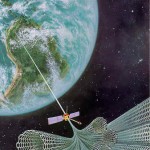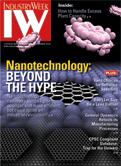Rice University researchers calculate what it would take to make new two-dimensional material

It would be a terrible thing if laboratories striving to grow graphene from carbon atoms kept winding up with big pesky diamonds.
“That would be trouble, cleaning out the diamonds so you could do some real work,” said Rice University theoretical physicist Boris Yakobson, chuckling at the absurd image.
Yet something like that keeps happening to experimentalists working to grow two-dimensional boron. Boron atoms have a strong preference to clump into three-dimensional shapes rather than assemble into pristine single-atom sheets, like carbon does when it becomes graphene. And boron clumps aren’t nearly as sparkly…more


 science at Rice
science at Rice When is nothing really something? When it leads to a revelation about
When is nothing really something? When it leads to a revelation about 

 Graphane
Graphane